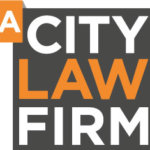
Pregnant employees are entitled to take 26 weeks’ Ordinary Maternity Leave and 26 weeks Additional Maternity Leave, irrespective of their length of service or the number of hours worked each week. You may not return to work during the two weeks immediately following the birth of your child (four weeks for women who work in factories).
You are free to chose when you would like your maternity leave to start, however, the earliest you can chose to start your maternity leave is during the 11th week before the expected week of your child’s birth. In certain circumstances, your maternity leave may start automatically earlier than the date you chose as the start date for your maternity leave. This applies where you are absent from work wholly or partly because of pregnancy at any time during the four weeks before the expected week of childbirth or if you give birth early.
Ifyou have at least 26 weeks’ service by the end of the 15th week before your child is expected to be born, you may be entitled to Statutory Maternity Pay (SMP), provided your average weekly earnings are at or above the Lower Earnings Limit for National Insurance. SMP is payable for 39 weeks. For the first six weeks, SMP will be paid at 90% of your average weekly earnings. For the remaining 33 weeks, SMP will be paid at the standard rate which is prescribed by regulations and is adjusted from time to time. The Company will inform you of the applicable rate. If your average weekly earnings fall below the standard rate, SMP will be paid at 90% of your average weekly earnings throughout. SMP will be paid subject to deductions for tax and National Insurance contributions in the normal way.
In order to be eligible for maternity leave and SMP, you are required to notify your line manager in writing by or during the 15th week before the expected week of your child’s birth. You must inform your Line Manager of the following:
- you are pregnant
- the week in which your child is due
- the date you intended to start your maternity leave
- the date from which you will be claiming SMP
You should enclose a MAT B1 certificate with your written notification signed by your registered doctor or registered midwife to confirm the expected week of childbirth.
During Ordinary Maternity Leave, you will continue to receive your contractual benefits and your normal terms and conditions will continue to apply, except for those terms relating to wages and salary. You will continue to accrue holiday but holiday must be taken in the year it is earned. During Additional Maternity Leave, the rights and obligations under your contract of employment are reduced, but you must still give notice in accordance with your contract of employment if you want to leave. In addition, you will continue to be bound by your obligations of confidentially and loyalty. Only statutory holiday will accrue.
You do not have to notify the Company separately of your return date. It will be assumed that you will come back to work on the date the Company has notified you is the end of your maternity leave period. If you return to work immediately after a period of Ordinary Maternity Leave you will return to work in the same job you left before you started your maternity leave. If you return to work from a period of Additional Maternity Leave, you will return to the same job you were employed to do. If this is not reasonably practicable, you will be offered a similar job on equally favourable terms and conditions.
For more information contact us…
0207 426 0382
enquiries@acitylawfirm.com
” ”

